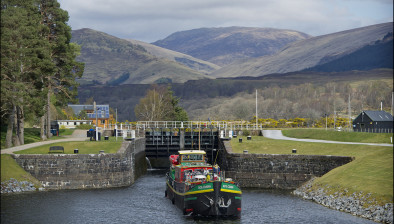Blog: Planning: power to the people?
 We need a Scottish planning system which will inspire, empower and deliver for the future, writes Gavin Mowat from Scottish Land & Estates.
We need a Scottish planning system which will inspire, empower and deliver for the future, writes Gavin Mowat from Scottish Land & Estates.
Planning is a thorny issue which more than one elected member of Holyrood has been warned against getting involved in, and for good reason. Red tape, costly, time consuming and controversial developments. Unfortunately, these are just some of the frustrations that people too often cite whenever the subject of planning broached. But, having made it through 2016 unscathed, eternal optimists at the Scottish Government have taken the bull by the horns and proposed changes to the Scottish planning system which, we are told, will inspire, empower and deliver for the future.
Proposals set out in Places, People and Planning – a consultation on the future of the Scottish planning system aim to inspire change by, making clear plans, enabling communities to get involved in the planning process at an early stage, helping to deliver more high quality homes and create better places to live, and reducing bureaucracy and improving resources. The sentiment is promising and if the proposals are carefully implemented they might just result in a pragmatic planning system that better suits rural Scotland.
Why do I say it is promising? For those of you who have been part of Scottish Land & Estates longer than I have, you will remember that back in 2013 the organisation made some constructive suggestions (section 5.4) to improve the planning system as part of its response to the Land Reform debate. Those recommendations included; a genuinely plan-led system; encouraging the public to become more involved in planning policy and plan-led system rather than focusing on individual applications should be developed or increased; Local Authorities can increase dialogue with all sectors of the community during the initial phase of the Local Development Plan process; and providing more training to all stakeholders to improve the value of engagement in the planning process. These ideas are now echoed in the Scottish Government’s consultation, forming core principles of its proposals for change – a promising step.
Even since the 2009 implementation of secondary legislation for the last planning act, there has been no shortage of voices calling for more streamlined, efficient and consistent planning. As part of that chorus, Scottish Land & Estates has consistently argued for enhanced community engagement and a reduced need for reactive objections through wider public consultation and better communication with local planning authorities at the development plan stage.
This is a pragmatic stance and one which chimes with the Scottish Government’s overarching proposals for the future of planning in Scotland. However, establishing trust in the system across all stakeholders is a tough balance to strike and one which more detail would help to address. For example, how will the proposed increased decision-making role for local review bodies engender trust from both developers and communities? Or, how can we be sure that the proposed Local Place Plans won’t just be shaped by people intent on opposing development?
If we are to see a planning system that truly enables and empowers Scotland’s rural communities, we should welcome proposals that see frontloading (where opportunities for engagement focus on the beginning of the process rather than the end) of the process as well as the extension of permitted development rights as a good starting point.
Development plans with guidance notes in one document could also make the system more accessible, the removal of the Main Issues Report and replacing it with a full draft plan should make it easier to access and understand, and allowing communities to prepare local place plans to be considered for the statutory development plan might encourage more communities and individuals to get involved. But improving access and community involvement at the early stages must be a representative process.
It must fully reflect the diverse nature of Scotland’s rural communities and their needs, otherwise the aspirations of a planning system that inspires and is inclusive will struggle to be fulfilled. Getting the right balance between the amount of trust and power stakeholders feel they have in the system is key. And the devil is in the detail.

















